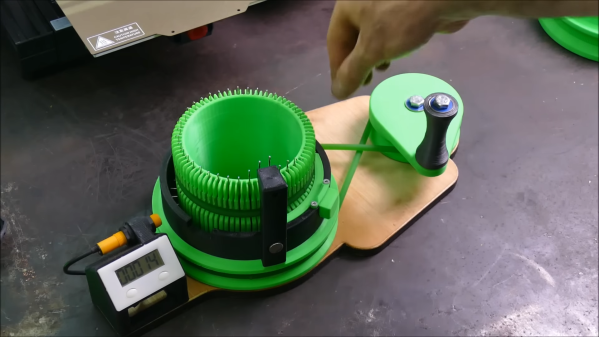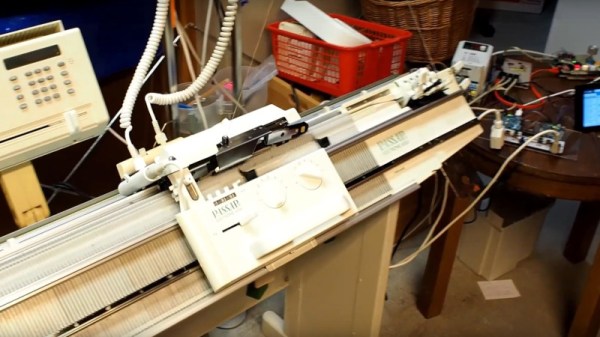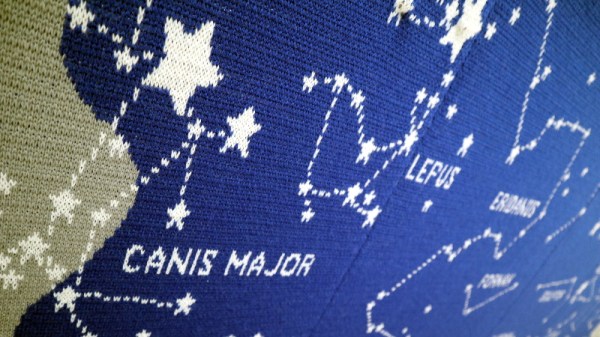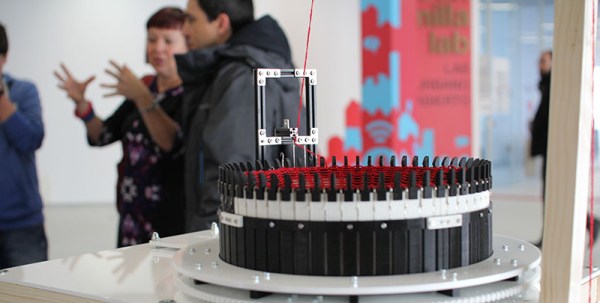3D printing socks isn’t really a thing yet. You’d end up with scratchy plastic garments that irritate your feet no end. You can easily 3D print all kinds of nifty little mechanisms, though, so why not 3D print yourself a machien to knit some socks instead? That’s precisely what [Joshua De Lisle] did.
The sock knitting machine is a simple device, albeit one that takes up most of the build area on a common 3D printer. It’s properly known as a circular sock machine, and is capable of producing the comfortable tubular socks that we’re all familiar with. All it takes is a bit of yarn and a simple handcranking of the mechanism, and it’s capable of extruding a sock before your very eyes.
He steps through his various iterative design improvements, and shows us how to build the device using knitting machine hooks to handle the yarn directly. The device is also instrumented with a digital counter to keep track of how far along your given sock is.
Your friends at the pub might go running for the doors when you start explaining that you’re thinking about making your own socks. Don’t let them deter you; we’ve seen others tread this path before. Video after the break.


















